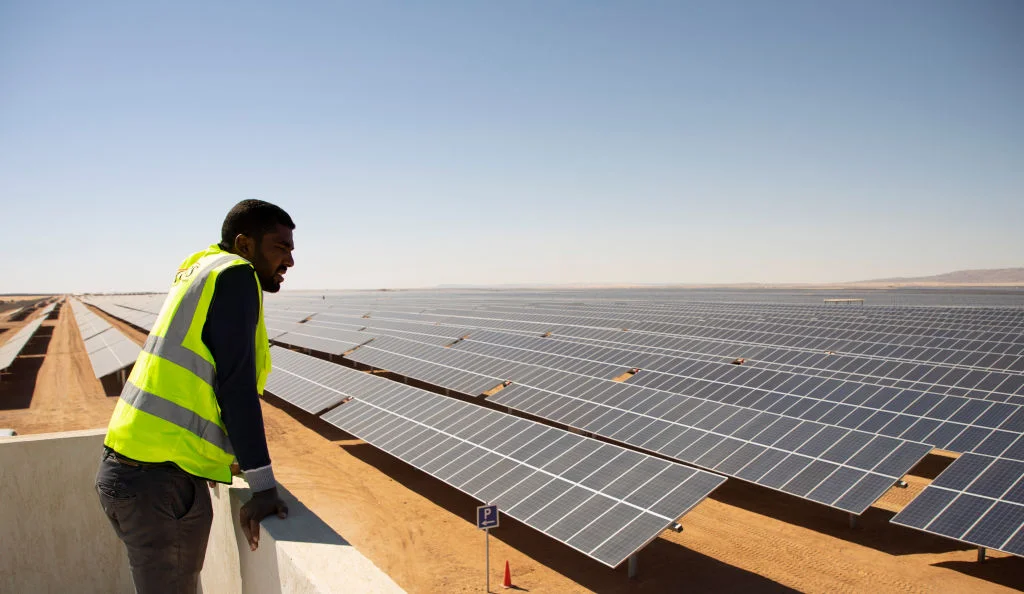African utility-scale solar rebounds strongly, much higher than pre-COVID levels

Kigali, 16 April 2025 – After several years of slowed activity, utility-scale scale solar in Africa has regained its top position contributing to the most newly installed capacity in 2024. And this segment promises to reach new heights in 2025 thanks to multiple projects under construction and deemed to be commissioned in the next 9-18 months. This regained activity is driven by 2 main trends: the uprise of solar + BESS which unlocks new technical possibilities and the growing number or projects being developed on bi-lateral basis with governments across the continent.
Between 2014 and 2019, utility-scale has been the main driver of solar in Africa, experiencing a strong annual growth and reaching its peak in 2019 with approximately 2.5 GWp of new installations (+82% compared to 2018).
But the COVID outbreak put a sudden halt to this success story. For obvious reasons, many projects were paused in 2020, and that year only 600 MWp of new utility-scale solar came online (-74%). And this pause has had long-lasting effect of this solar segment. In the period 2020-2023, an average of only 640 MWp were brought online annually. During that period, C&I became the most important segment contributing solar growth in Africa. This growth of C&I was mostly fueled by South Africa, which has been plagued by lasting load shedding issues and saw hundreds of companies turn to solar to secure their power supply while their national utility was failing them.
However, 2024 saw a reversal of trends, with utility-scale solar coming back in force with close to 2 GWp being commissioned and claiming back the top position for the segment contributing the most to solar growth on the continent.
And this may only be the tip of the iceberg as close to 9 GWp is currently under construction across the continent! AFSIA data indicates that utility-scale solar projects are currently under construction in 45 out of the 54 African countries. It is therefore expected that 2025 and 2026 will beat by far any previous year of utility-scale solar development in Africa and set a remarkable new benchmark for the continent. The 5 most active countries (Algeria, Egypt, South Africa, Angola and Zambia) represent 70% of all this new capacity being built. And more is at various stages of development, tendering and financing.
This bright present and future seem to be the result of 2 major trends. First, a growing percentage of utility-scale projects are now hybrid, combining PV and BESS. Whereas only 4% of such projects built before 2024 included a storage component, 20% of 2024 projects and those currently under construction include storage. The challenge of solar intermittency and weak African grids has been known for long and has limited the pure-play solar capacities that could be added in many African countries. But thanks to the recent sharply decreasing cost of BESS, it is now becoming not only technically possible, but most importantly commercially viable to enjoy solar electricity, grid stability and dispatchability.
The second noticeable trend is that the process followed to develop a utility-scale solar project has evolved. Historically, utility-scale projects have mostly been driven by international tenders, calling the best developers from across the globe to compete through a transparent tender process. These tenders were government-led and supported by DFIs. But organizing such tenders can be a very heavy and lengthy process, and in some cases has not led to the desired outcome. Nowadays however, the largest share of utility-scale solar projects currently under way is the result of bi-lateral negotiations between the developer and the host government (with the exception of the recent 3 GW EPC tender in Algeria). This approach has proven very successful and has in some cases significantly reduced project development time (the 50 MW Sheikh Mohamed Bin Zayed Solar PV project in Togo, also known as the Blitta project and developed by AMEA Power, is a good example of this).
Not all developers seem to be comfortable with this new approach, and as a result, the group of successful developers has evolved in recent times. While Scatec and ACWA Power continue to consistently be among the top solar developers in Africa, utility giants such as Enel Green Power, Engie, EDF, Globeleq or Acciona to cite a few, have barely added any new solar capacity since 2020. They have been replaced by a group of new players led by AMEA Power, MCA, Sun Africa and Copperbelt Energy. These companies seem to be more agile in their project development approach and achieve better and faster results by engaging in direct negotiations with their governmental clients.